Abstract
Pityrosporum orbiculare, the presumed etiologic agent of tinea versicolor, was cultured in vitro and antigenic extracts prepared from the cultured organisms. Studies with lymphocytes from human cord blood and peripheral blood of guinea pigs demonstrated that such extracts were not mitogenic. Further studies in guinea pigs indicated that the animals could be sensitized by the injection of P. orbiculare extract in Freund's complete adjuvant and that this extract could elicit lymphocyte transformation and delayed skin test responses in sensitized animals. A group of 12 tinea versicolor patients and 15 normal subjects were studied in vitro for cell-mediated immunity to P. orbiculare extract. The majority of the subjects tested in both groups demonstrated positive lymphocyte transformation responses to this extract, as well as to standard mitogens and common microbial antigens. However, lymphocytes from tinea versicolor patients produced significantly less leukocyte migration inhibitory factor activity when stimulated by Candida albicans and P. orbiculare extracts than did lymphocytes from normal subjects. This was also true if only subjects with positive lymphocyte transformation responses to these antigens were considered. Leukocyte migration inhibitory factor responses to streptokinase/streptodornase were not significantly different between the two groups. Therefore, it appears that although both normal subjects and tinea versicolor patients demonstrate prior sensitization to antigens of P. orbiculare, the effector function of lymphocytes from most tinea versicolor patients appears to be impaired in that they produce subnormal amounts of the mediator leukocyte migration inhibitory factor when stimulated with antigenic extracts of this organism.
Full text
PDF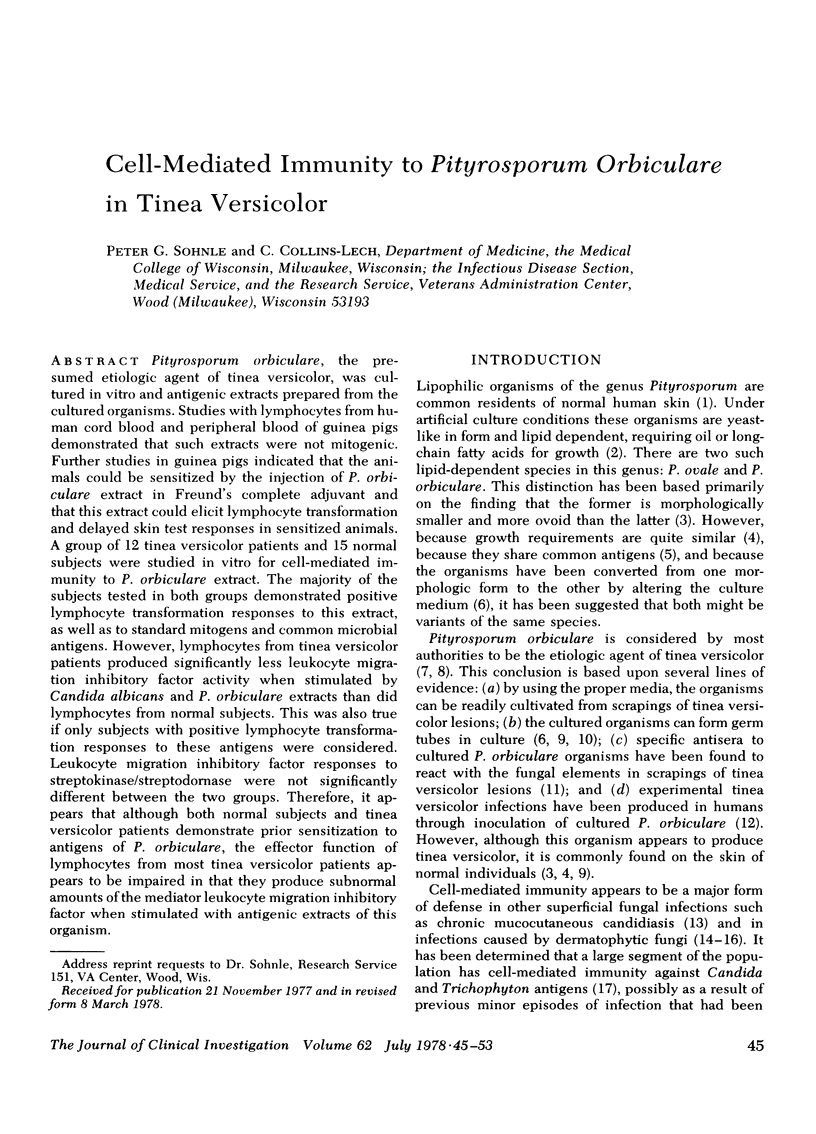
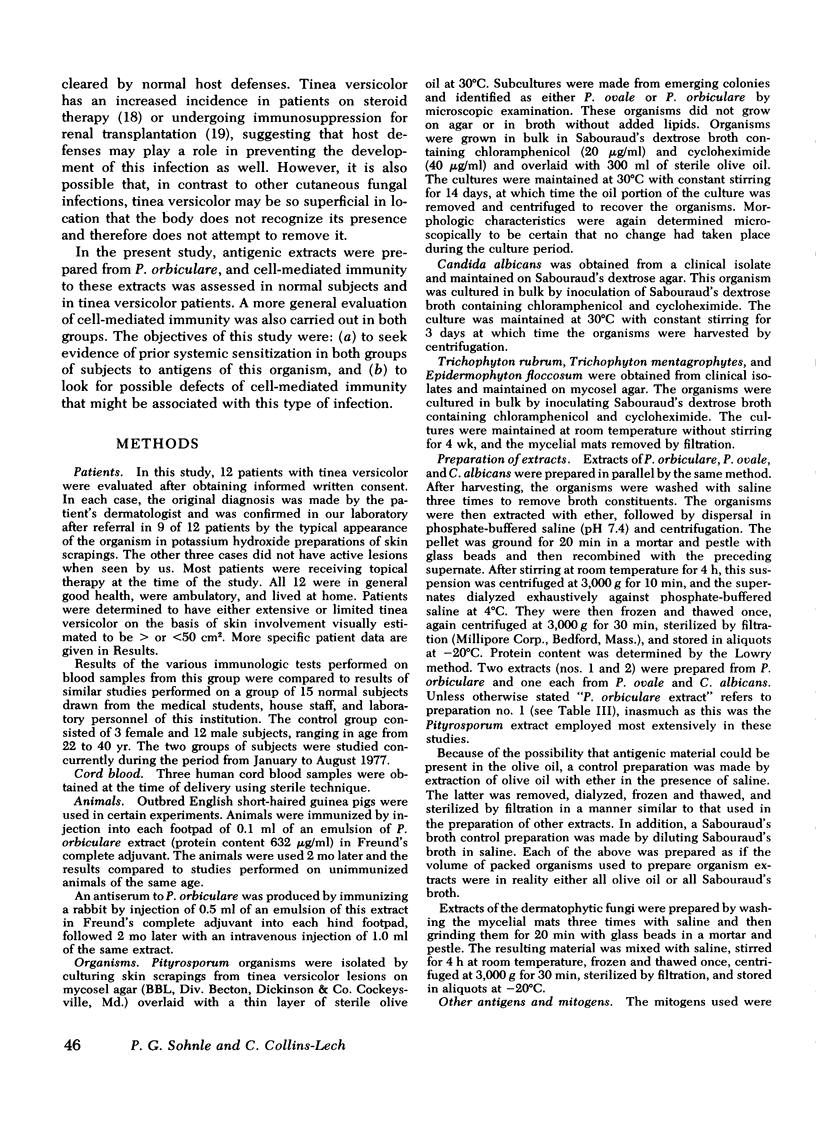
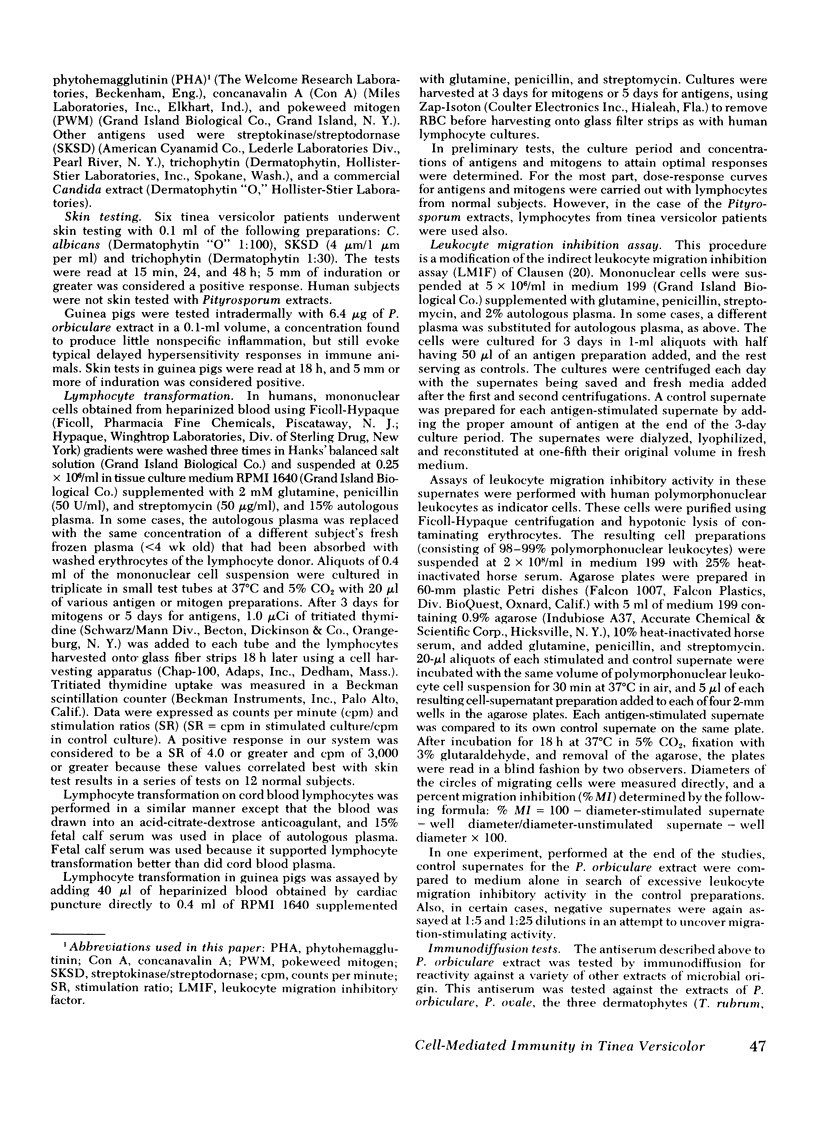
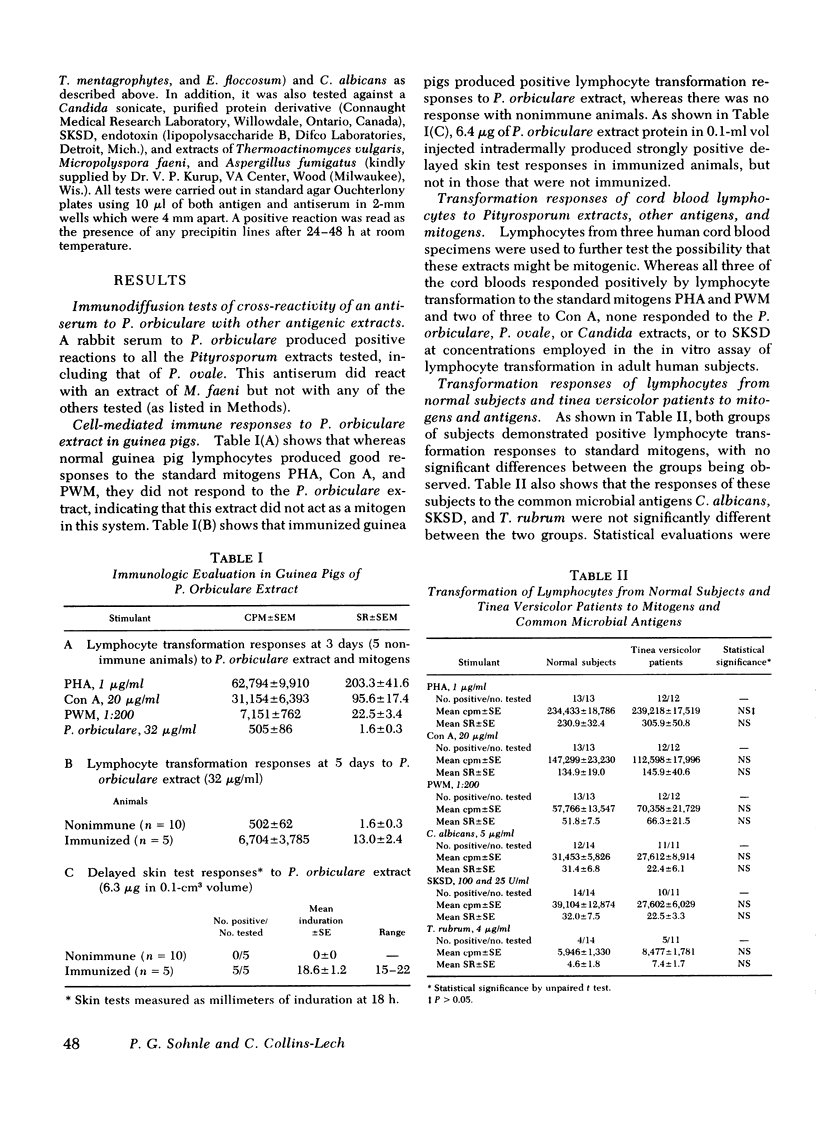
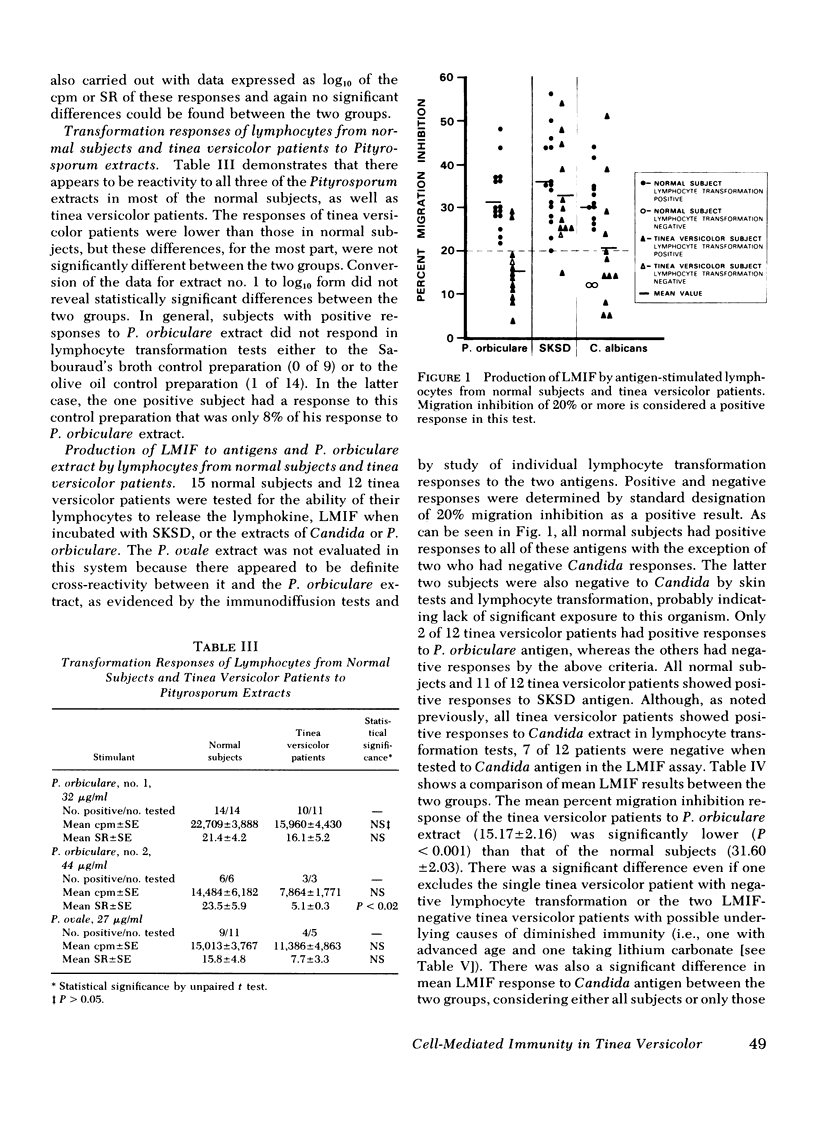
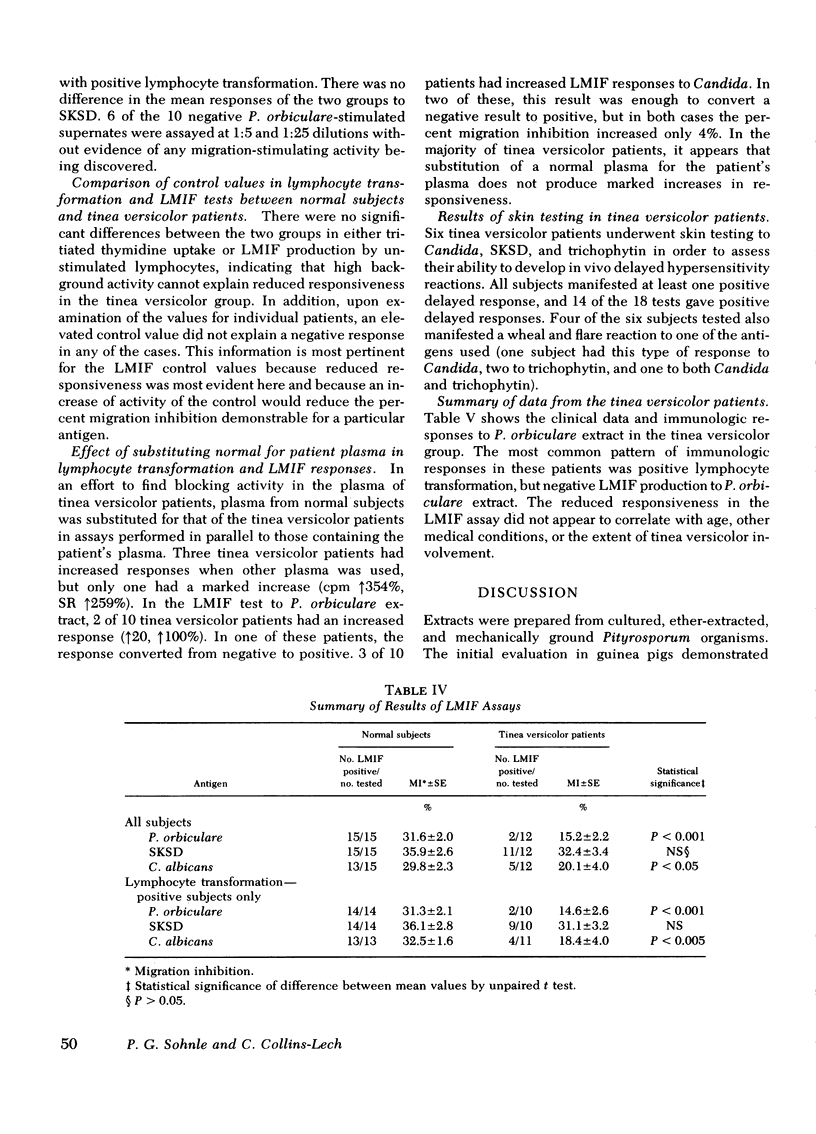
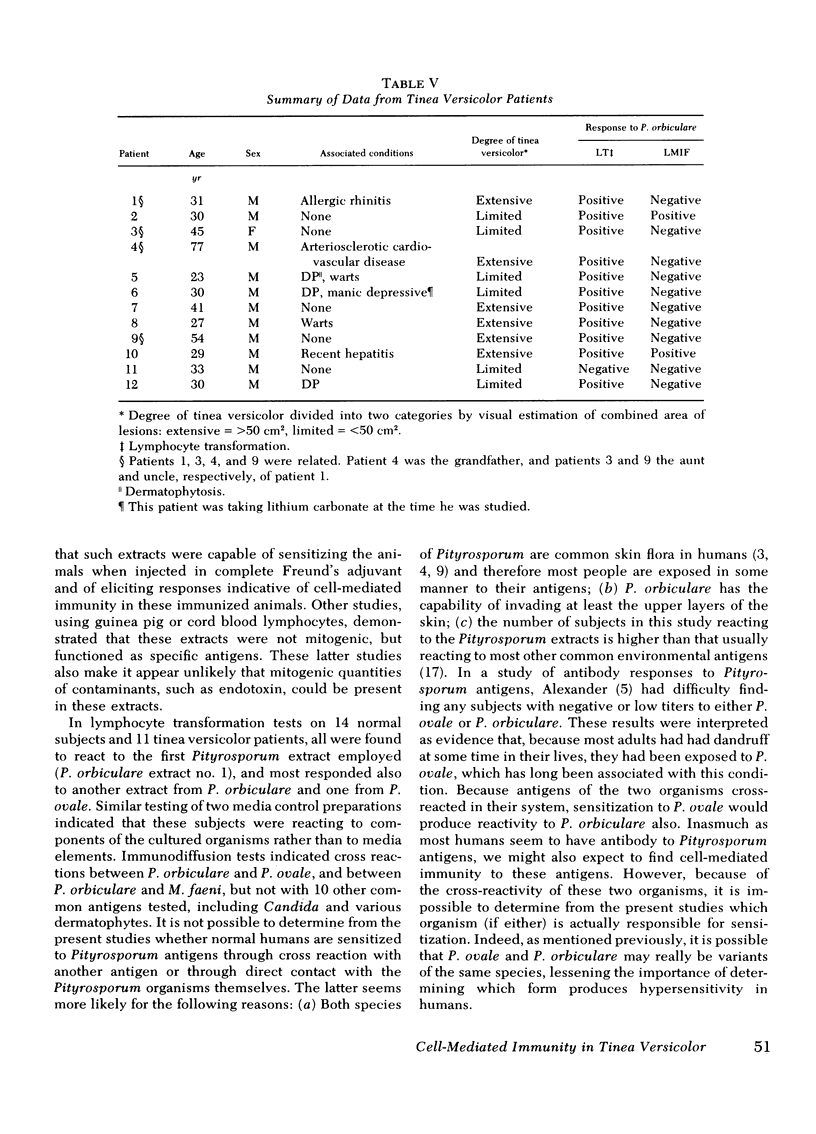
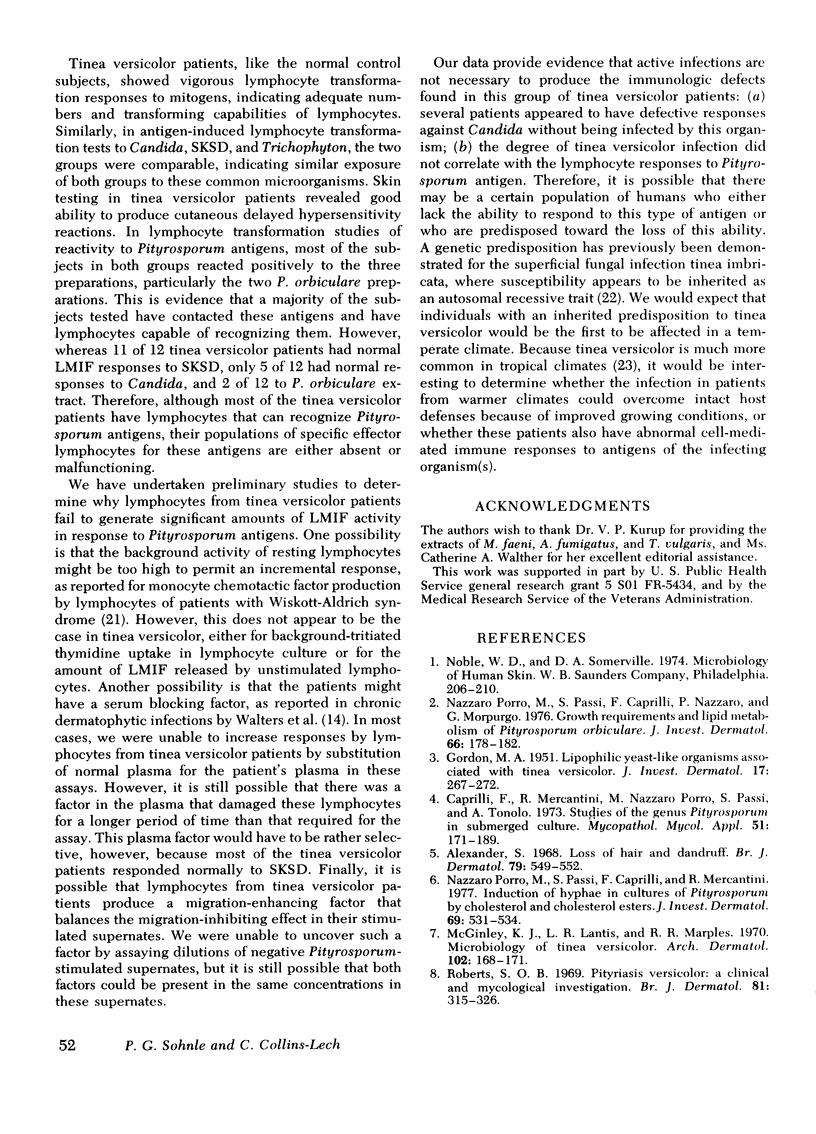
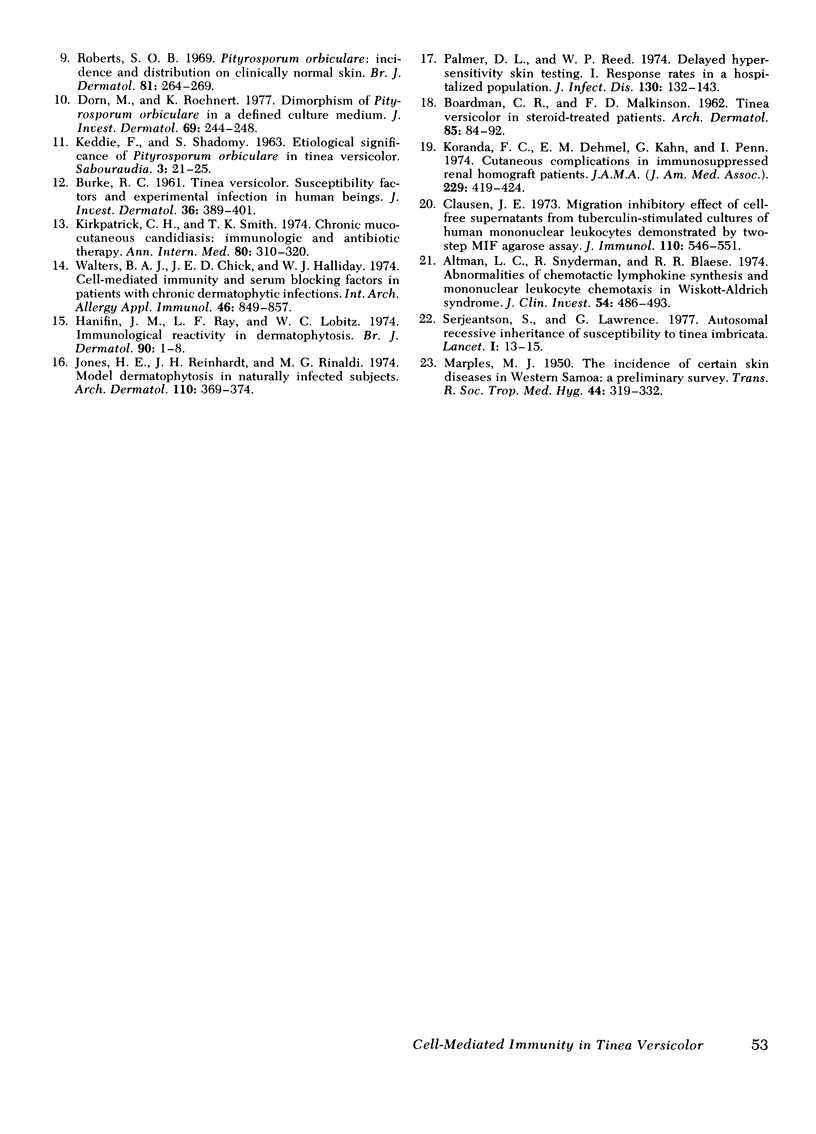
Selected References
These references are in PubMed. This may not be the complete list of references from this article.
- Alexander S. Loss of hair and dandruff. Br J Dermatol. 1967 Oct;79(10):549–552. doi: 10.1111/j.1365-2133.1967.tb11411.x. [DOI] [PubMed] [Google Scholar]
- Altman L. C., Snyderman R., Blaese R. M. Abnormalities of chemotactic lymphokine synthesis and mononuclear leukocyte chemotaxis in Wiskott-Aldrich syndrome. J Clin Invest. 1974 Aug;54(2):486–493. doi: 10.1172/JCI107784. [DOI] [PMC free article] [PubMed] [Google Scholar]
- BURKE R. C. Tinea versicolor: susceptibility factors and experimental infection in human beings. J Invest Dermatol. 1961 May;36:389–402. doi: 10.1038/jid.1961.60. [DOI] [PubMed] [Google Scholar]
- Caprilli F., Mercantini R., Nazzaro Porro M., Passi S., Tonolo A. Studies of the genus Pityrosporum in submerged culture. Mycopathol Mycol Appl. 1973 Nov 15;51(2):171–189. doi: 10.1007/BF02141109. [DOI] [PubMed] [Google Scholar]
- Clausen J. E. Migration inhibitory effect of cell-free supernatants from tuberculin-stimulated cultures of human mononuclear leukocytes demonstrated by two-step MIF agarose assay. J Immunol. 1973 Feb;110(2):546–551. [PubMed] [Google Scholar]
- Dorn M., Roehnert K. Dimorphism of Pityrosporum orbiculare in a defined culture medium. J Invest Dermatol. 1977 Aug;69(2):244–248. doi: 10.1111/1523-1747.ep12506384. [DOI] [PubMed] [Google Scholar]
- GORDON M. A. Lipophilic yeastlike organisms associated with tinea versicolor. J Invest Dermatol. 1951 Nov;17(5):267–272. doi: 10.1038/jid.1951.93. [DOI] [PubMed] [Google Scholar]
- Hanifin J. M., Ray L. F., Lobitz W. C., Jr Immunological reactivity in dermatophytosis. Br J Dermatol. 1974 Jan;90(1):1–8. [PubMed] [Google Scholar]
- Jones H. E., Reinhardt J. H., Rinaldi M. G. Model dermatophytosis in naturally infected subjects. Arch Dermatol. 1974 Sep;110(3):369–374. [PubMed] [Google Scholar]
- Keddie F., Shadomy S. Etiological significance of Pityrosporum orbiculare in tinea versicolor. Sabouraudia. 1963 Oct;3(1):21–25. [PubMed] [Google Scholar]
- Kirkpatrick C. H., Smith T. K. Chronic mucocutaneous candidiasis: immunologic and antibiotic therapy. Ann Intern Med. 1974 Mar;80(3):310–320. doi: 10.7326/0003-4819-80-3-310. [DOI] [PubMed] [Google Scholar]
- Koranda F. C., Dehmel E. M., Kahn G., Penn I. Cutaneous complications in immunosuppressed renal homograft recipients. JAMA. 1974 Jul 22;229(4):419–424. [PubMed] [Google Scholar]
- MARPLES M. J. The incidence of certain skin diseases in western Samoa: a preliminary survey. Trans R Soc Trop Med Hyg. 1950 Dec;44(3):319–332. doi: 10.1016/0035-9203(50)90060-5. [DOI] [PubMed] [Google Scholar]
- McGinley K. J., Lantis L. R., Marples R. R. Microbiology of tinea versicolor. Arch Dermatol. 1970 Aug;102(2):168–171. [PubMed] [Google Scholar]
- Palmer D. L., Reed W. P. Delayed hypersensitivity skin testing. I. Response rates in a hospitalized population. J Infect Dis. 1974 Aug;130(2):132–137. doi: 10.1093/infdis/130.2.132. [DOI] [PubMed] [Google Scholar]
- Porro M. N., Passi S., Caprill F., Nazzaro P., Morpurgo G. Growth requirements and lipid metabolism of Pityrosporum orbiculare. J Invest Dermatol. 1976 Mar;66(3):178–182. doi: 10.1111/1523-1747.ep12481919. [DOI] [PubMed] [Google Scholar]
- Porro M. N., Passi S., Caprilli F., Mercantini R. Induction of hyphae in cultures of Pityrosporum by cholesterol and cholesterol esters. J Invest Dermatol. 1977 Dec;69(6):531–534. doi: 10.1111/1523-1747.ep12687967. [DOI] [PubMed] [Google Scholar]
- Roberts S. O. Pityriasis versicolor: a clinical and mycological investigation. Br J Dermatol. 1969 May;81(5):315–326. doi: 10.1111/j.1365-2133.1969.tb13990.x. [DOI] [PubMed] [Google Scholar]
- Roberts S. O. Pityrosporum orbiculare: incidence and distribution on clinically normal skin. Br J Dermatol. 1969 Apr;81(4):264–269. doi: 10.1111/j.1365-2133.1969.tb13978.x. [DOI] [PubMed] [Google Scholar]
- Serjeantson S., Lawrence G. Autosomal recessive inheritance of susceptibility to tinea imbricata. Lancet. 1977 Jan 1;1(8001):13–15. doi: 10.1016/s0140-6736(77)91653-1. [DOI] [PubMed] [Google Scholar]
- Walters B. A., Chick J. E., Halliday W. J. Cell-mediated immunity and serum blocking factors in patients with chronic dermatophytic infections. Int Arch Allergy Appl Immunol. 1974;46(6):849–857. doi: 10.1159/000231187. [DOI] [PubMed] [Google Scholar]


